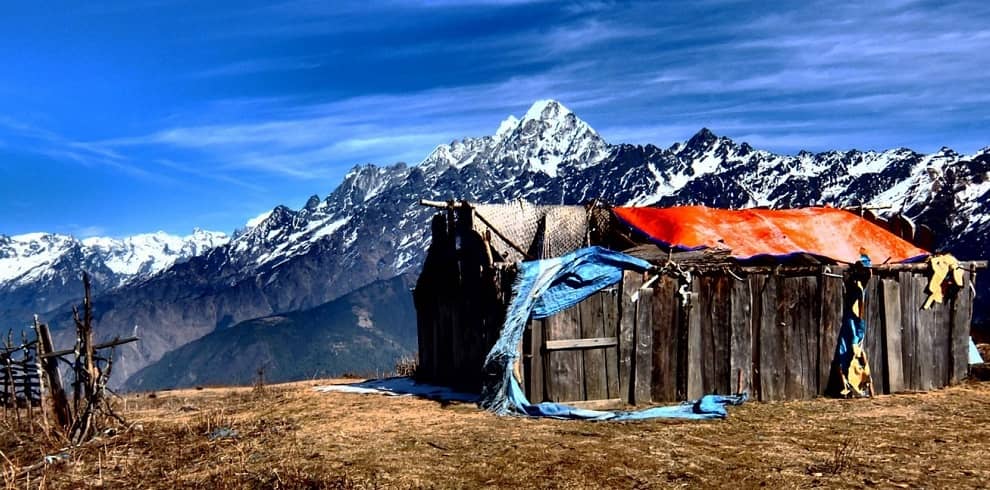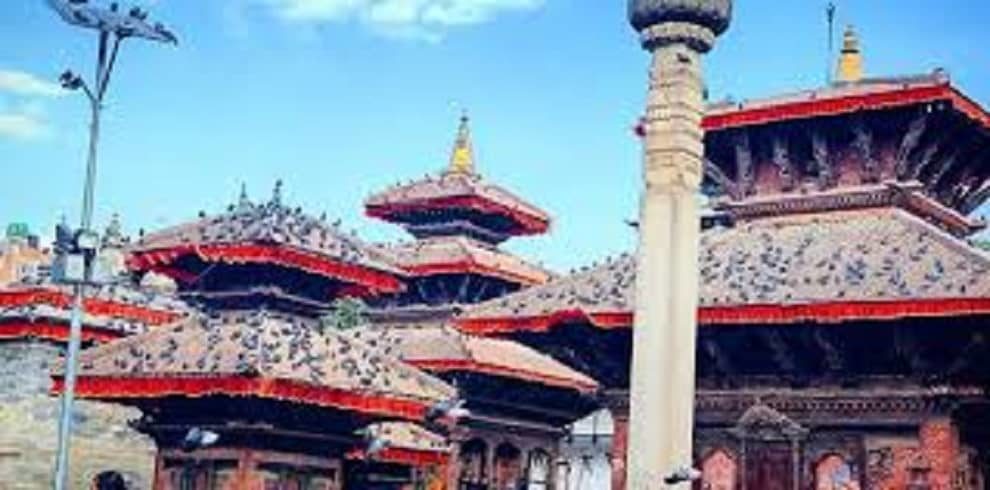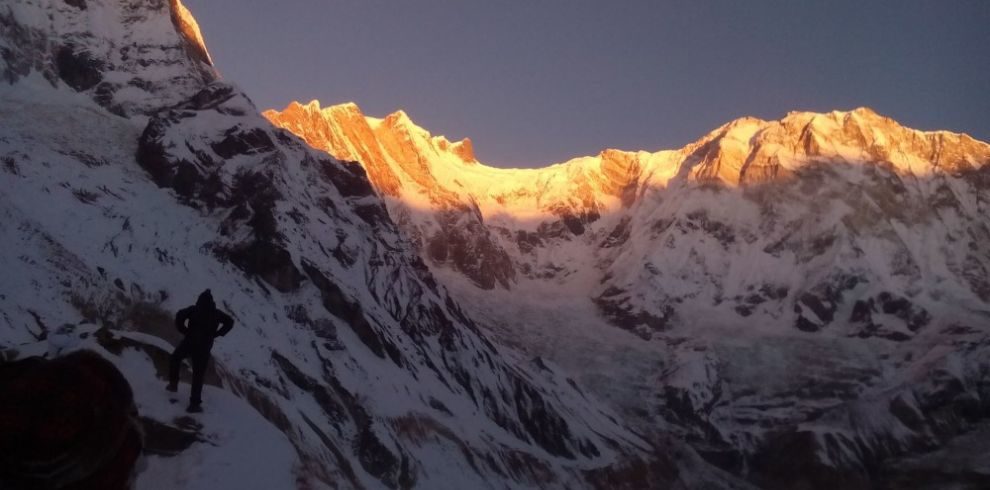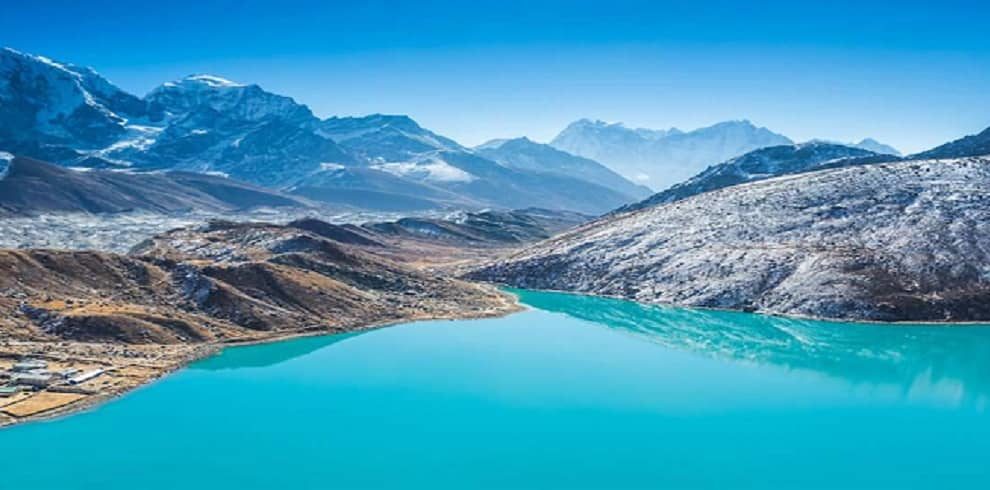Introduction To Tamang Heritage Trekking In Nepal
A brand-new walking trail in the well-known Lantang region is called the Tamang Heritage Trek.
It was created by the Tourism for Rural Poverty Alleviation Program (RPAP) and is currently a lesser-known route that showcases the historic and distinctive way of life of the Tamang people while incorporating stunning natural beauty.
Through this walk, we have the opportunity to delve deeply into the general history and way of life of the Tibetan ancestors. During the harvest season, the Tamang people spend most of their time engaged in farming and trading.
The route we take to reach their settlement passes through rhododendron forests in blossom, beautiful meadows, local wildlife sightings, magnificent waterfalls, and holy lakes like Gosai Kunda, Bhairav Kunda, and others.
Driving to Syabrubensi will be the first leg of the excursion, followed by a hike to Gatlang. Gatlang is a Tamang village located high on a mountainside surrounded by terraced farms.
Both the stunning and revered Pavati Kunda Lake and the Tamang Buddhist temple are accessible to us. We shall cross the therapeutic bath and spa using Tatopani’s natural spring water as we travel there.
Continue your hike to Thuman, which is renowned for its shamanic rituals and breathtaking views of the Langtang valley. We reach Briddim, a tiny Tamang settlement, once more.
We can also go to the Dukchu Gompa local monasteries, which are revered because of Guru Rinpoche. The traditional Langtang valley hike from Briddim village to the Kyanjin Gompa will then be our next stop.
We’ll spend some time here acclimating, visiting the monastery and the local cheese factory.
We will go to Tserko Ri (5,450m), the trek’s highest point, as an added treat to enjoy a breathtaking vista of the Langtang peaks. We will return to Syabrubensi from Kyanjin Gompa and board the bus to Kathmandu there.
The Tamang Heritage Journey is a nice trek that is packed with information about the Tamang people and their way of life in the region.
You’ll not only be learning about their culture but you’ll also be rewarded with stunning mountain vistas. Additionally, there are other thrilling treks in the Langtang Region.
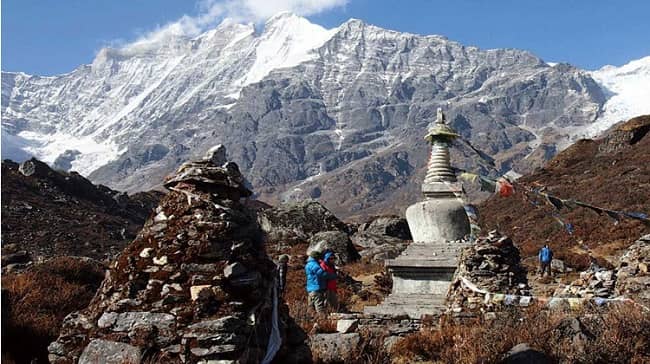
Highlights Of Tamang Heritage Trekking In Nepal
- In the Langtang region, a recently opened trekking destination
- The region’s unspoiled beauty and less crowdedness
- Breathtaking mountain views
- Buddhist monasteries from the past
- The Langtang National Park is home to rare natural creatures and birds.
- Visit a nearby cheese factory and explore the Kyanjin Gompa while taking in the surrounding scenery and mountains.
- Warm welcome and unique, special cultures and customs of the Tamang people
Benefits Of Tamang Heritage Trekking In Nepal
- Private transportation was provided to and from Tribhuvan International Airport in Kathmandu, which is the city’s main airport (TIA).
- To measure blood oxygen saturation levels at high altitudes, provide a pulse oximeter. It’s a crucial signal for spotting early indicators of imminent altitude sickness and other health hazards.
- First Aid Kit.
- If you don’t already have any, arrange for down jackets and sleeping bags.
Equipment Checklist
Equipment lists for Tamang Heritage Trek
It is advised to pack the essential gear for the hike, including clothing and accessories. Although we recognize that every one of our clients has their own preferred style of attire, the following are ideas that should be brought. The major stuff, which shouldn’t weigh more than 20 kg, will be carried by porters. In addition, the equipment can be rented in Kathmandu.
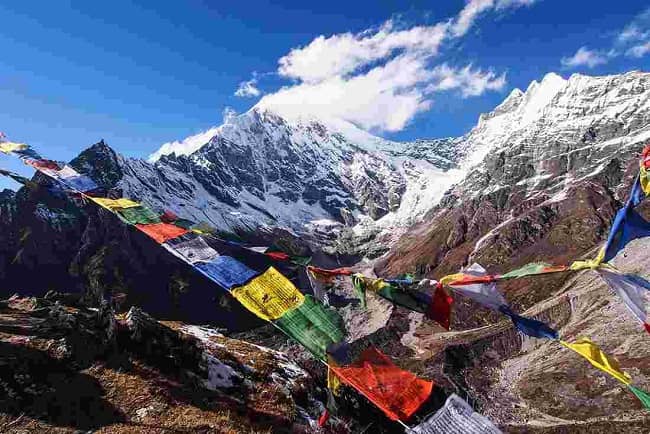
Head
- Scarf or hat for the sun
- Winter hat, insulating hat, or a hat with a wide brim
- Extra batteries for the headlight
Face
- Sunscreen
- Sunglasses that block UV rays
- Wipes for the face and body
Hands
-
Lightweight gloves
-
Heavyweight winter gloves
Body
- Shirts for hiking
- Shirt with a long sleeve made of synthetic fiber.
- Rain jacket with hood
- Jacket made of fleece
- Cotton pants that are light and airy.
- T-shirt (bring lightweight wool)
- Underwear made of polypropylene
- Jacket with down feathers (available for rent in Kathmandu)
- Sweater
- Jacket and pants that are waterproof
Footwear
- Boots for Hiking
- Socks made of thick wool (Take an extra pair of thick light socks)
Essential gear
- A daypack or a backpack (Size depends on whether you take a porter or not)
- Bottle with a heating element
- Purification of water
- Pole for hiking
- Bag for sleeping (-15 degree bag is best for high altitude trekking)
Toiletries
- a drying towel of medium size
- Toothbrush
- Toothpaste
- Deodorant/floss/toilet paper
- Biodegradable soap in a bar
- a pair of nail clippers
- Mirror, little
Personal accessories
-
Money
-
Watch
-
Cell phone
-
Camera
Extra items
- Kit for first aid
- Extra passport pictures and passport photocopies
- Pencil and notebook
- Binoculars
Trip Information
How you’ll start your journey toward the Langtang valley trek?
As the sole international airport in Nepal, Tribhuvan International Airport will be your point of arrival in Kathmandu. Upon arrival, a hotel room in Kathmandu must be booked for the night. We’ll take a bus or a local jeep the following day to get to our location. After about an 8–9 hour journey from Kathmandu, our trek starts at Syabrubesi (the entrance to Langtang).
Local transportation from Kathmandu to Syabrubesi and back is covered by the package. A private jeep is an additional expense.
On-arrival Airport Pickup
For valued clients who have booked a package with us, we provide complimentary airport arrival and departure transfers. At the airport, our agent will be holding a leaflet with your name on it. They will greet you and give you a marigold garland or khada as a welcome gesture before driving you to your accommodation in a private vehicle.
We ask that all of our valued clients arrive in Kathmandu by 3 p.m. at least one day prior to the trip departure date. We need time to conduct a trip briefing, during which we offer you with information on your journey and inspect your equipment (luggage) to ensure that you are well prepared for the walk.
Accommodation Details During The trek
The 12-day Tamang Heritage Trek includes 11 nights spent in mountain lodges with basic amenities and wonderful native hospitality, which will make you feel at home.
As you would want to relax before and after the hike, two nights in Kathmandu are necessary but not included in the program. Excellent selections of hotels are available for all types of budgets. The bedding includes a bed with mattresses, a blanket, and pillows, almost on a twin-sharing basis. Showers will be available for an additional fee. With local service providers in the Himalayan region, we have good public relations.
What about the Meals?
This trek’s lunch plan is quite practical. The bundle includes three meal items: 12 breakfasts, 12 lunches, and 11 dinners. The meals will be the greatest options from the lodge’s menu and will be delicious, wholesome, fresh, and hygienic. Traditional regional, Asian, and western cuisines are all represented on the menu. We strongly advise drinking liquids at high altitudes, such as green tea, lemon tea, hot lemon, ginger tea, garlic soup (must), etc., for health reasons.
Although there are many options for Nepalese and international food easily available for you to pick from according to your preferences, meals in Kathmandu are not included in the packages.
Alcoholic beverages, hot and cold drinks, and standard meals (breakfast, lunch, and dinner with seasonal fruits) are all excluded from the package.
Best Time To Tamang Heritage Trek
When selecting whether to trek to The Tamang HeritageTrek, the weather is one of the most crucial factors to consider. Trekking is most suitable in the spring and fall. Due to the heavy snowfall, chilly temperatures, ferocious winds, storms, and slick routes during the winter and monsoon, trekking is challenging.
January – February
The coldest months are now, notably early January and early February. This might cause extremely low temperatures when there has been a lot of snowfall in the alpine area. Even if the day may be pleasant and clear with high temperatures, the night would be bitterly chilly. Trekking during this time would not be advised because the trek would be made even more difficult by the snow.
April – May
The ideal time of year to hike in the Tamang Heritage Trek is right now. Throughout the hike, the weather is excellent. There will be breathtaking views of the Langtang Lirung, Langtang II, and Ganesh Himal, among many more mountains. From about the middle of March, temperatures may start to rise, and under a clear sky, snow mountains will look their best. During this period, many hikers frequently complete their adventures. Bamboo and birch forests will be lush, dense, and green along the route.
June – May
Before it starts to rain, this is also the ideal time to go hiking. Rainfall in Nepal begins towards the end of June and lasts until the middle of August. The walk is much more fun in the spring and summer.
August – July
During this season, the rainfall is at its heaviest. It would not be good to hike during this season due to rainfall since the difficulty would increase. The terrain would be quite slick. Avoiding such hazards is advised because we will be hiking to the Tserko Ri.
October – September
The Tamang Heritage Trek is also at its best during this time of year. Due to the pleasant weather, this is the busiest travel season. A favorable environment for trekking develops as the monsoon gradually finishes. In the daytime, the temperature rises to 20 degrees, and at night, it drops to 5 degrees. Trekking is particularly enjoyable during this time of year because of the beautiful skies and stunning mountain views. The Tamang Heritage Trek is at its best during this period, which is typically from mid-September through the end of the month. The two biggest festivals in Nepal, Dashain, and Tihar, also draw visitors at this time of year.
December – November
As winter gradually sets in, snow starts to fall in the Langtang region, making it difficult to walk. The nights will start to become chilly. The busiest time of year is November since it has the clearest, sunniest days. The view of the mountain and the beautiful blue sky is amazing because of how stable and consistent the daytime temperatures are. Beginning in December, the weather turns chilly and the snow starts to fall.
The weather in the Mountain region can be erratic, and the transition from day to night can be abrupt.
Acclimatization
Two to three of the nights on our 12-day Tamang Heritage Trekking program are spent more than 3500 meters above sea level, where there is a chance of contracting acute mountain sickness, also known as altitude sickness. At Kyanjin Gompa, we shall adjust our bodies. We will visit a variety of locations, including the monastery itself, the cheese factory, and the optional treks scheduled to Tserko Ri’s viewpoint. Many hikers experience altitude sickness, which requires prompt medical attention and shouldn’t be disregarded. We strongly advise alerting your group leader and guide as soon as you notice any symptoms so that your health will be in trustworthy hands. Our trekking leader and guide have thorough first aid training and have years of expertise in the Himalayas. Precautions will be suggested by your hike leader or guide. The ideal strategy is to take your time and consume at least 4 liters of water every day. Altitude sickness can only be treated if it is severe by rapidly descending. Please be aware that your group leader has the last say over whether to continue climbing or to stop, depending on your general health. It is critical to remember that some people are more susceptible than others.
Trip Grade: Fitness level, Medical, and Health
The Tamang Heritage walk is a simple and worthwhile hike. Depending on the location, the hike will last anywhere between three and six hours per day. We’ll stop frequently to enjoy the mountain vistas. Long climbs, sharp descents, and a steep forward trail are all part of the trek itineraries, which also include rocky trails and forested areas. The experience would be more comfortable and pleasurable if you are physically healthy before embarking on such journeys. This may work to your benefit if you have trekking experience or love it. People with delicate medical problems, such as heart or lung disease, shouldn’t attempt this walk.
A typical day on the trek
A day of trekking will be worthwhile because it offers a special experience that allows for leisurely walking with plenty of time to take in the view, take pictures, and explore the nearby community. During the journey, you will be escorted by an expert guide who is experienced, friendly, and qualified, as well as porters who will carry your luggage. On days when you go trekking, you must bring your compact everyday daypack.
The day begins with a cup of tea in the morning. Depending on the length and type of the day’s walk, we would leave around 7 or 8 a.m. each morning after packing our bags and eating a filling breakfast. After 3 to 4 hours of walking, lunch will be given at noon on the path to the next location, and we continue after a brief break. When we arrive at our overnight lodge, we munch on the extra-dietary foods that have been prepared.
After supper, we will have free time to explore the neighborhood. The afternoon stroll is typically shorter, lasting only 2 to 3 hours. Around 6 or 7 o’clock, dinner is served. We talk about each group member’s hiking experience of the day in the evening before turning in for the night. The next day’s itinerary will be explained by the guide. After the travel briefing is through, we have fun and play games. In addition to playing cards, conversing with the crew, reliving the day’s adventure, and reading novels before retiring to bed for some well-earned rest, trekkers enjoy learning Nepalese from our crews.
How to Communicate During the Trek?
For a nominal fee, you can use the internet at the lodges, but after you reach high elevations, you’ll have to communicate via phone.
Our office will connect with all of our valued clients by Signal, WhatsApp, phone, Messenger, and other means at least once a day to ensure that they are fine, safe, and comfortable.
You might get some signals along the route, depending on the network you’re using, but they’re not particularly strong at high altitudes. In Kathmandu, though, you may easily obtain a local sim card.
In most cases, you will be able to connect to the internet at all of the lodges/hotels where you will be staying.
Wi-Fi is usually available during the walk-in lodges/lodges for an additional fee.
Extra personal expenses on trekking
In Kathmandu, the clients are responsible for their own meals and lodging. You may book them conveniently online, or we can do it for you if you want.
Similarly, you must pay for visa processing, travel insurance, beverages, trip snacks, hot and cold drinks, souvenirs, and tips to trekking crew members, among other things. Bringing cash (Dollars) and changing it to Rupees is recommended. In the Nepali market, only Rupees are accepted.
Electricity, battery recharge, water on trekking
In all lodges, electricity for camera and phone recharge is available at an additional expense. During the trip, you can either buy pre-packaged mineral water or bring boiled water with you. You will also receive a water-purifying pill.
We advise against drinking water from rivers or taps because the water may be contaminated.
Trek travel insurance
This Trek requires travel insurance. Before beginning the hike, all trekkers must produce a copy of their comprehensive travel insurance policy certificate to us. Medical and emergency repatriation must be covered, as well as helicopter rescue and evacuation costs at high altitudes (up to 6000m).
Based on the experiences of our former clients, we may recommend insurance firms to you. We do not, however, sell insurance coverage. Within a week of booking the trek, we ask that all trek participants provide us with their comprehensive insurance information. In an emergency, we’ll prepare a speedy, successful rescue using your insurance policy and other documentation you supplied us.
Before you acquire travel insurance, call your provider and double-check that it covers helicopter rescue and evacuation up to 6000 meters. Do not rely solely on the material of the insurance company’s website.
How to get a visa for Nepal?
Except for Indian nationals, all foreigners must have a valid visa to enter Nepal. At Tribhuvan International Airport and Nepal’s borders with India and Tibet, you can obtain an on-arrival visa. Visit www.immigration.gov.np. for additional details.
You’ll need a passport that’s valid for at least six months, a passport-size photo, and visa fees to apply for a visa. A 30-day visa costs $50 at the moment (to be paid in cash).
A free visa will be given to children under the age of ten. It is strongly recommended that you examine the current regulations. Visa regulations are subject to change at any time. Citizens of China and members of the South Asian Association for Regional Cooperation (SAARC) (Bangladesh, Bhutan, India, Maldives, Pakistan, and Sri Lanka) are exempt from visa fees.
Certain countries’ citizens may be denied a visa upon arrival. On-arrival visas are not available for citizens of Nigeria, Ghana, Zimbabwe, Swaziland, Cameroon, Somalia, Liberia, Ethiopia, Iraq, Palestine, and Afghanistan. If you are a citizen of one of these countries, please contact the Nepalese Embassy in your country.
Before we embark on our journey, we’ll double-check everything (luggage, equipment, etc.) during our briefing.
Currency Exchange in Nepal | USD to NPR
Nepali Rupees (NPR/Rs) are the local currency.
(1 USD = ~ Rs.124 NPR).
You can exchange major foreign currencies through local banks and legitimate money exchanges in Kathmandu and all over Thamel. Legitimate money exchanges display their ongoing exchange rates visibly to the public.
Please note – only 100 INR (Indian Rupees) and 2000 INR notes are legal in Nepal.
Despite having the security advantage of traveler’s cheques, we prefer cash exchange. It helps avoid lengthy processes and high bank commissions.
You can withdraw cash (in Rupees)from ATMs all over Kathmandu and Thamel itself. Many of these ATMs are open around the clock. The maximum withdrawal amount is 35,000 Rupees for a 500 Rupees processing fee for foreign cards.
If you use the money exchange facilities at banks and financial institutions, they impose a service charge fee of about 4% or more.
During the trek, there are no banks and money exchange services so you should exchange your money in Kathmandu, depending on how much personal expense you require. Only Nepali Rupee is accepted in trekking regions.
Most established banks in Asia will only accept foreign currency notes that are not old, torn, or faded. Please ensure that you have new, clean notes.
How much luggage can I take during the Trek?
Your luggage must not exceed 9 kilograms per trekker. One porter will be allocated to each of the two trekkers, and the total weight of their luggage should not exceed 18 kg. Our porters are never overworked.
You may, however, need to bring your own knapsack or backpack (with valuables or anything important). Carry only what you need. Excess baggage can be safely stored at your hotel or at our store for no charge.
Before we begin the journey, we will double-check everything (luggage, equipment, etc.) during our briefing.
Trek Safely
All of our clients’ safety, security, and happiness are guaranteed by us. We place the highest priority on your safety. For each trip, we will bring all of the essential gear, equipment, and first-aid kits. Our guides and leaders have completed thorough first-aid training.
If a trekker becomes ill as a result of the altitude, we will analyze the situation and keep everyone safe. In the event of an emergency, the rescue chopper will be on standby to transport you back to the lower elevation. Every team member will be together for safety during the walk, and there will be no danger of being lost in hazardous terrains.
Responsible travel
Our philosophy is to photograph the voyage while leaving only footsteps. We believe in sustainable tourism and exclusively offer eco-friendly excursions.
We collaborate with the Kathmandu Environmental Education Project (KEEP) to plan eco-friendly itineraries that satisfy the needs of both tourists and local populations in the trekking areas.
Our Crew
Our knowledgeable guide/Sherpa will accompany us on the trek to ensure your safety and comfort. Your stuff will be carried by porters.
Our members are locals from high Himalayan remote places, and they have exceptional physical endurance at high altitudes.
We value all of our employees, so we pay them well and take care of their insurance, clothing, food, and lodging throughout the trip. When our guides and porters become unwell or injured, they receive medical attention.
Only happy people can make others happy, thus we always make sure that our team members are happy. Members of our trek/expedition team have the following qualifications:
- Authorized Trekking Guide Training Certificate
- Intensive Wilderness First Aid Training
- Fluency in English and another major language
- Conservation and Biodiversity Training
- Experience with rock climbing
Tipping during trek
Tipping is optional and should be dependent on the quality of service received. A tip is an accepted and respected technique in Nepali society to express gratitude (Dhanyabad) for good service.
On the last day of the walk, the majority of our guests offer advice. The amount you tip is totally up to you, and it may be more or less based on your impression of service quality, the length of your trip, your budget, and your appreciation for their efforts.
100% Guaranteed Booking
We are a government-approved and bonded trek and tour company in Nepal. We are also members of the Nepal Mountaineering Association (NMA) and the Trekking Agency Association of Nepal (TAAN) (NMA). As a result, you may book your trek/expedition with complete trust.
As a deposit, we require 10% of the total trip cost. Within a week of booking, please send your documentation, including a copy of your passport, passport-size pictures, travel insurance policy, and arrival and departure flight information.
You can make a 10% deposit via bank transfer, western union, or online payment on our website, and the full balance when you arrive in Nepal. Cash, bank transfer, and credit cards are all acceptable methods of payment. In addition, you will receive payment choices in your email.
Last-minute Trek booking in Nepal
Even though it is always a good idea to plan ahead for your excursions. However, for those who are unable to do so, we provide a special last-minute booking option. To take advantage of this benefit, you must pay the entire trip cost 24 hours before the trek’s departure.
Even while we do our best to plan treks at any time, there is a small potential of a trek delay due to events beyond our control, such as the inability to obtain air tickets or unfavorable weather.
Can I extend my trip?
If you wish to stay in Nepal for a few days after the trip, we can arrange enjoyable activities for you, such as exploring areas in and around Kathmandu, Chitwan jungle safari, paragliding, rafting, canoeing, and so on.
Feedback
We offer a farewell meal at the end of the trek, and we will also award you with a trek completion certificate after dinner (hard copy). It’s also a great opportunity to tell us about your experience and provide us feedback.
Overview Of Tamang Heritage Trekking
- A recently created path, the Tamang Heritage Trek, aims to highlight the ethnic heritage and local culture of the Tamang people in the Langtang region. It is based on local tourism and is well-known in Nepal for the Tamang cultural trek.
- The fantastic Langtang Valley Trekking is nearby the trekking route. The Tamang communities, who have distinctive clothes, food, rituals, festivals, and lifestyles, inhabit the area. They practice Buddhism and rely on conventional agriculture. The trekking route is expansive and home to a wide range of plants and animals.
- The Tamang ethnic tribe has spread out across Nepal, from the North and Mid-West to the Southern Terai, but is particularly well-represented in the Rasuwa district of Langtang, the Ganesh Himal region, and the Kathmandu valley rim. Tamangs of Mongol descent who went to Tibet over a long period of time adopted the old Bon and Buddhist ways of life’s culture and religion. After a fascinating journey to begin the trek from Syabrubesi to a Tamang village, the Tamang Heritage Trail takes you to the high highlands of the Langtang region close to the Tibet border.
